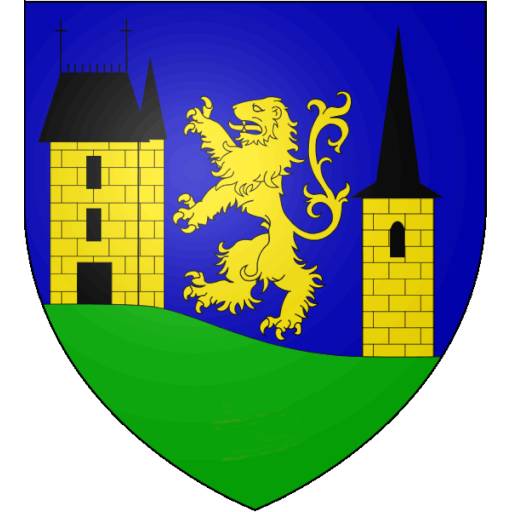The dependencies of the abbey of Saint-Maurin
The possessions of Saint-Maurin, abbey in the Agenais area, extended over two dioceses. A third of them fell within the diocese of Cahors (then Montauban) and two thirds in that of Agen.
The consolidation of the abbey domains
The possessions of Saint-Maurin were consolidated and added to during the period of peace which extended from the war known as the Albigensian crusade (1209-1229) to the sackings of the Hundred Years War, by the Earl of Derby (Henry of Lancaster) in 1346 and the Black Prince (Edward, Prince of Wales) in 1356. The abbey recovered in the 15th century but suffered the during the religious wars of the 16th century. It was again restored at the beginning of the 17th century, and with its possessions acquired from the 12th to the 14th centuries lasted until the French Revolution.
Pierre Simon, in his article [see references], cites the main abbots who increased the possessions of the abbey:
- the abbey of Calsan de Favols (1231-1237) saw a resumption of the life of the field after the crusades. Saint-Maurin benefited from important donations in 1233, 1235 and 1237. But it would mainly have been restitutions.
- Guillaume 1st de Belpech was abbot from 1238 to 1258. He had the donation of the church of Saint-Sixte confirmed in 1239. But the big achievement of his abbacy was the negotiation of the rights of Saint-Maurin between 1247 and 1255. When Puymirol was built he he concluded an agreement with the Bishop of Agen for the rights and tithes of 17 churches and annexes.
- Gausbert Girval was abbot from 1259 to 1303. In 1281 he concluded with the Bishop of Cahors an agreement on the eleven churches and annexes which came under Saint-Maurin in the diocese of Cahors.
However, the first donations, which can be found in the archives, are mentioned between the middle of the eleventh century and the year 1115, around the two events which attest to the renewal of monastic life in Saint-Maurin: the donation of the monastery to the Abbey of Moissac by the Durforts around 1082 and the date of the consecration of the church carved in stone, 1097. The following donations should be noted in particular:
- half of the Saint-Julien de la Serre church and a farm
- the domain of Cassinias and the Bois d’Aviol to “remove all that is necessary to build the church, the monastery …”
- the church of Saint Martin de Seyssel near Beauville which during the 13th century ceased to be a possession of the abbey
- an estate in Saint-Sixte
- Saint-Pierre de Lalande and all its alleu (free and frank domain).
The reconstruction of the domain
The 13th century estate was reconstituted from 1230. The archives have kept track mainly of church possessions and the collection of tithes. They also recorded the bulk of resources up to the 18th century. The possession of churches was important because it marked the influence of an abbey and allowed it to agglomerate other assets.
It is thanks to the agreements concluded with the bishops of Agen and Cahors in 1254 and 1281 respectively that we have a list of these possessions.
The agreement with the Bishop of Agen cites the following churches and tithes (current municipalities and departments):
in the Lot et Garonne:
• St-Martin d’Anglars, parish church of Saint-Maurin
• Notre-Dame de Ferrussac, municipality of Saint-Maurin
• Garguilh, integrated into the territory of St-Martin d’Anglars and Saint-Pierre del Pech, municipality of Saint-Maurin, also identified under Saint Pardoux – Garguihile
• St-Sixte, municipality of St-Martin de Beauville
• Church of Gandaille, commune of Dondas, (today Saint Louis church)
• Ste-Foy near Frespech, municipality of Blaymont
• Church of Caillabet, commune of Frespech (Saint Georges church)
• St-Julien de Magabal, municipality of Hautefage-la-Tour
• St-Caprais de Cauzac
• St-Pierre de Cambot, commune of Tayrac, (today, church of Notre Dame)
• St-Amans, parish church of Tayrac
• St-Urcisse, municipality of the same name.
in the Tarn et Garonne:
• the tithes of Roquecor were exchanged in 1278 for the benefit of Saint-Vincent Lespinasse
• St-Genès de Golfech
• St-Pierre de Lalande, municipality of Goudourville
• St-Pierre de Sigognac
And in the diocese of Cahors:
in the Lot et Garonne:
• St-Pierre del Pech, municipality of Saint Maurin
• St-Julien (de la Serre), municipality of Dondas
• St-Pierre de Grayssas
• St-Martin de Lavalanède, municipality of Grayssas.
in the Tarn et Garonne:
• St-Germain de Moissaguel
• St-Pierre de Bugat, municipality of Bourg de Visa
• St-Pierre de la Chapelle, municipality of Montjoi
• St-Martin de Puycastel, municipality of Montjoi
• St-Pierre de Montmagnerie, municipality of Brassac
• Notre-Dame de Perville
• St-Jean de Lagarde-Teulet, municipality of Perville.
The life of the domain
Regarding the life of the abbey domain during the 13th and 14th centuries, we can shed light on it with two extracts from the conclusion of Pierre Simon’s article:
- note first of all that the area described by documents from the revolutionary period corresponds more or less to that which was reconstituted in the 13th century, and even for the most part in the years 1231-1262; it is moreover a question much more of rents or of ecclesiastical rights than of direct exploitation. When we speak of domain, we mean “all the monastery’s income”.
- the period 1255-1310 saw very many disputes with the nobles in the area. At the beginning of the 14th century we see a clear impoverishment of the monastery; it has difficulty paying its royalty to the King, at a time when the abbot is leading the way and at the same time he is subjected to aggressiveness from the main lords of the region.
Credits and bibliography
Les possessions de l’Abbaye de Saint Maurin aux XIIIe et XIVe siècles, Pierre Simon, article in the Revue de l’Agenais, 2012-4
